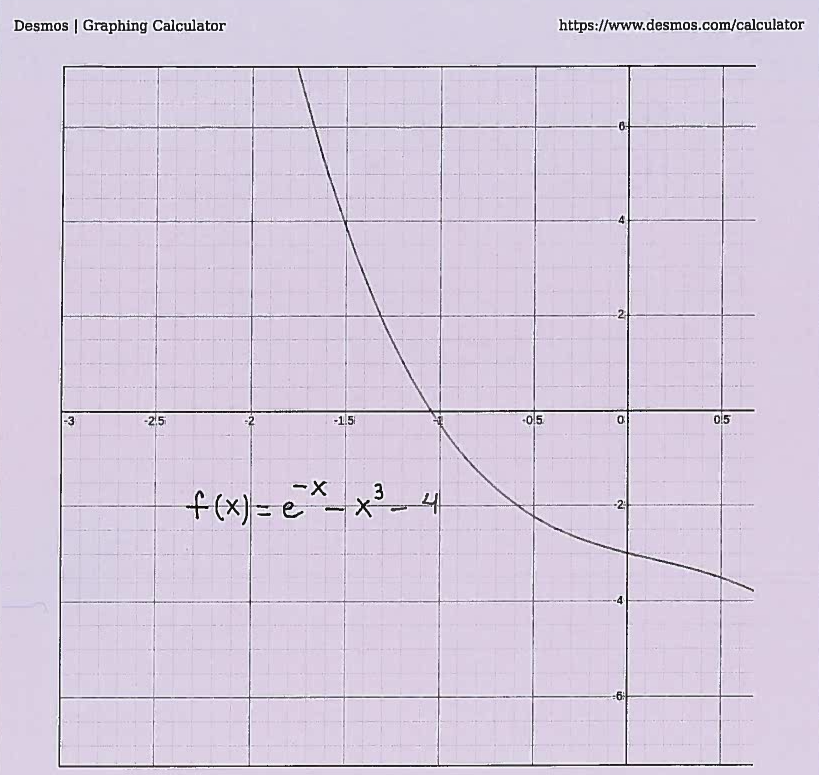SOLUTION 2: We are given the equation
$$ e^{-x}=4+x^3 \ \ \ \ \longrightarrow \ \ \ \ e^{-x}-x^3-4=0 $$
and the interval $ [-2, -1] $. Let function
$$ f(x)=e^{-x}-x^3-4 \ \ \ \ and \ choose \ \ \ \ m=0 $$
This function is continuous for all values of $x$ since it is the DIFFERENCE of continuous functions; it is well-known that $ e^{-x}$ is continuous for all values of $x$ and $x^3+4$ is continuous for all values of $x$ since it is a polynomial. (Please note that the graph of the function is not necessary for a valid proof, but the graph will help us understand how to use the Intermediate Value Theorem. On many subsequent problems, we will solve the problem without using the "luxury" of a graph.)


Note that $$ f(-2)= e^{-(-2)}-(-2)^3-4 = e^2+4 \approx 11.4 > 0 \ \ \ \ and \ \ \ \ f(-1)= e^{-(-1)}-(-1)^3-4 = e-3 \approx -0.3 <0 $$
so that $$ f(-1) \approx -0.3 < m < 11.4 \approx f(-2) $$
i.e., $m=0$ is between $ f(-1) $ and $ f(-2) $.
The assumptions of the Intermediate Value Theorem have now been met, so we can conclude that there is some number $c$ in the interval $[-2, -1]$ which satisfies
$$ f(c)=m $$
i.e.,
$$ e^{-c}-c^3-4=0 $$
and the equation is solvable.
Click HERE to return to the list of problems.



